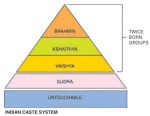 When I was begrudgingly forced to enter the chaotic and cruel world inflicted upon American teenagers known as high school, I immediately recognized a social hierarchy from my first moments in the crowded halls.
When I was begrudgingly forced to enter the chaotic and cruel world inflicted upon American teenagers known as high school, I immediately recognized a social hierarchy from my first moments in the crowded halls.
Football players and other athletes, also called “jocks” thanks to a slew of 1980s teen angst flicks, were firmly placed at the top rung of the social ladder, right next to their female counterparts – the promiscuous pretty girls. A few rungs down were the sports enthusiasts, endowed with an uncanny sense of school spirit, followed by the socially active overachievers who were constantly clawing for student government positions. Towards the bottom of the barrel lurked the social misfits, who would rather not have any label attached to them, as labels upset their desire for “anarchy.”
Stereotypical, yes, but this social order was as real as any other. Throughout my four years in high school I tried my best to avoid being assigned to any group, determined to carve my own social patterns without any labels destructing my path. I had a choice as to whether or not I would be a featured member in one of the cliques. People in India do not have choice.
Caste systems are as fundamental to India’s culture as curry spices or Bollywood films, but far more destructive. Derived from Hinduism, this twisted hierarchy has been embedded in the culture for over 1500 years and thrives on the belief that mankind are not created equally. According to National Geographic, “The ranks…come from a legend in which the main groupings, or varnas, emerge from a primordial being. From the mouth come the Brahmans—the priests and teachers. From the arms come the Kshatriyas—the rulers and soldiers. From the thighs come the Vaisyas—merchants and traders. From the feet come the Sudras—laborers…A fifth group describes the people who are achuta, or untouchable. The primordial being does not claim them.”
To be born an untouchable is to be cast into a sea of hatred. Untouchables are outcasts in Indian culture and must live separately from all other castes and hope to be spared from the tortuous tormenting that accompanies being born into such unfortunate circumstance. According to National Geographic one out of six Indians must suffer from this fate, with no way to escape the physical and emotional tolls of being an untouchable. They are beaten, raped, forced into slavery, and discriminated against in every way possible.
Though the persecution of the untouchables is one of the worst aspects of the caste system, there are many other less dangerous, but equally severe consequences. One from a lower caste cannot ever be accepted by one of a higher caste – friendships and marriages must be of the same ranking. Furthermore, it is very difficult, if not impossible, for one born to a low caste to become successful in business or politics. Lower castes are resigned to a life of low work – manual labor or cleaning services.
Activists around the globe have been trying to fight this ancient system for years. The European Union has had hearings on the issue recently, and European Parliament has passed a resolution on this human rights situation, noting with concern “the lack of substantive EU engagement with the Indian Government on the vast problem of caste-based discrimination,“ according to Peter van Dalen.
However, very little has been done by the EU system to implement the recommendations made. Furthermore, India’s repeated attempts to silence international debate on this issue, deeming it an internal matter, have deterred other parties from stepping in on the matter. For now, the caste system stays, caging the Indian people with no chance of escaping.
Somehow, after discovering the horrors of the Indian caste system, the American social ladder wrought with jocks, preps, nerds, and misfits doesn’t seem so despicable.
klarge@flagler.edu